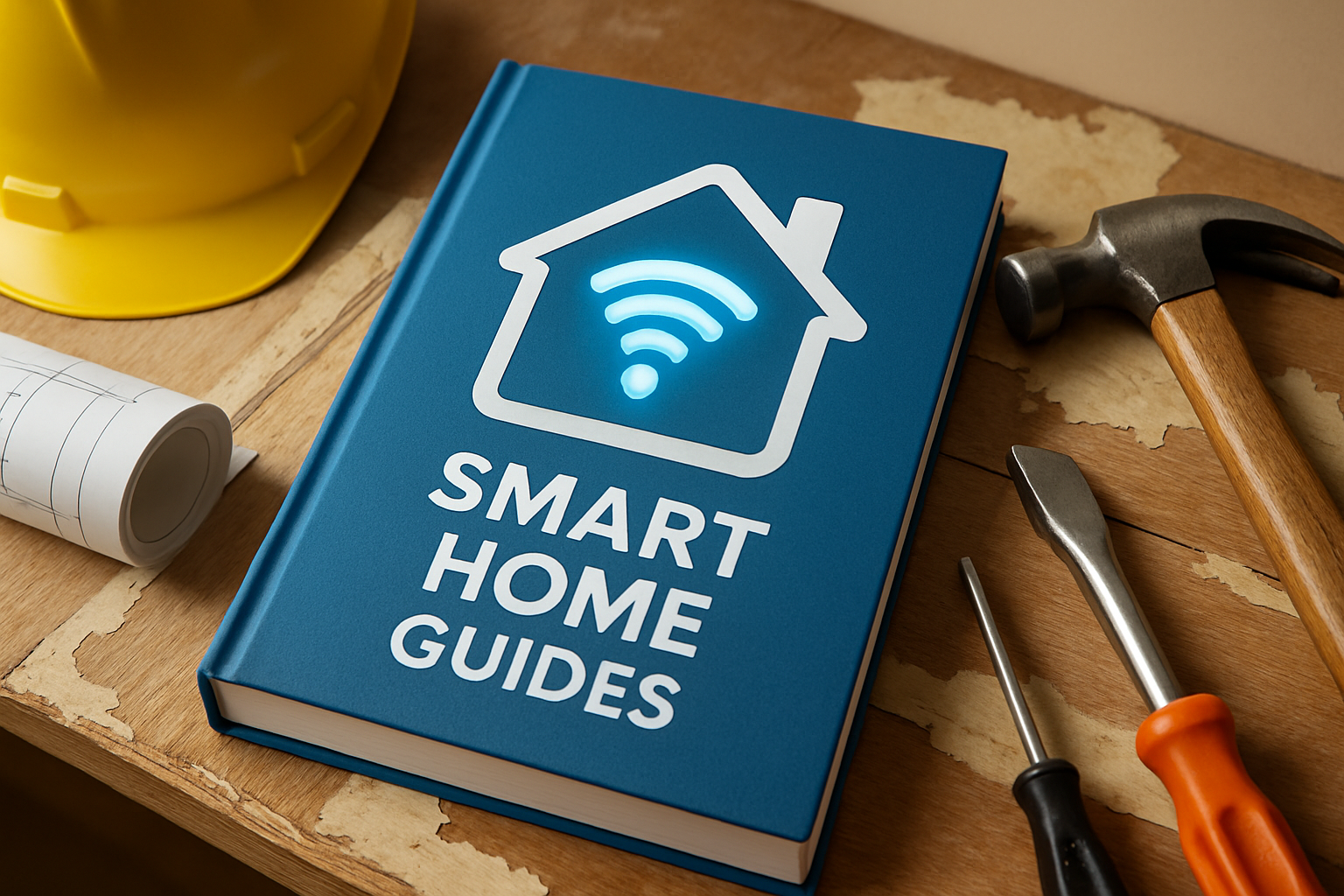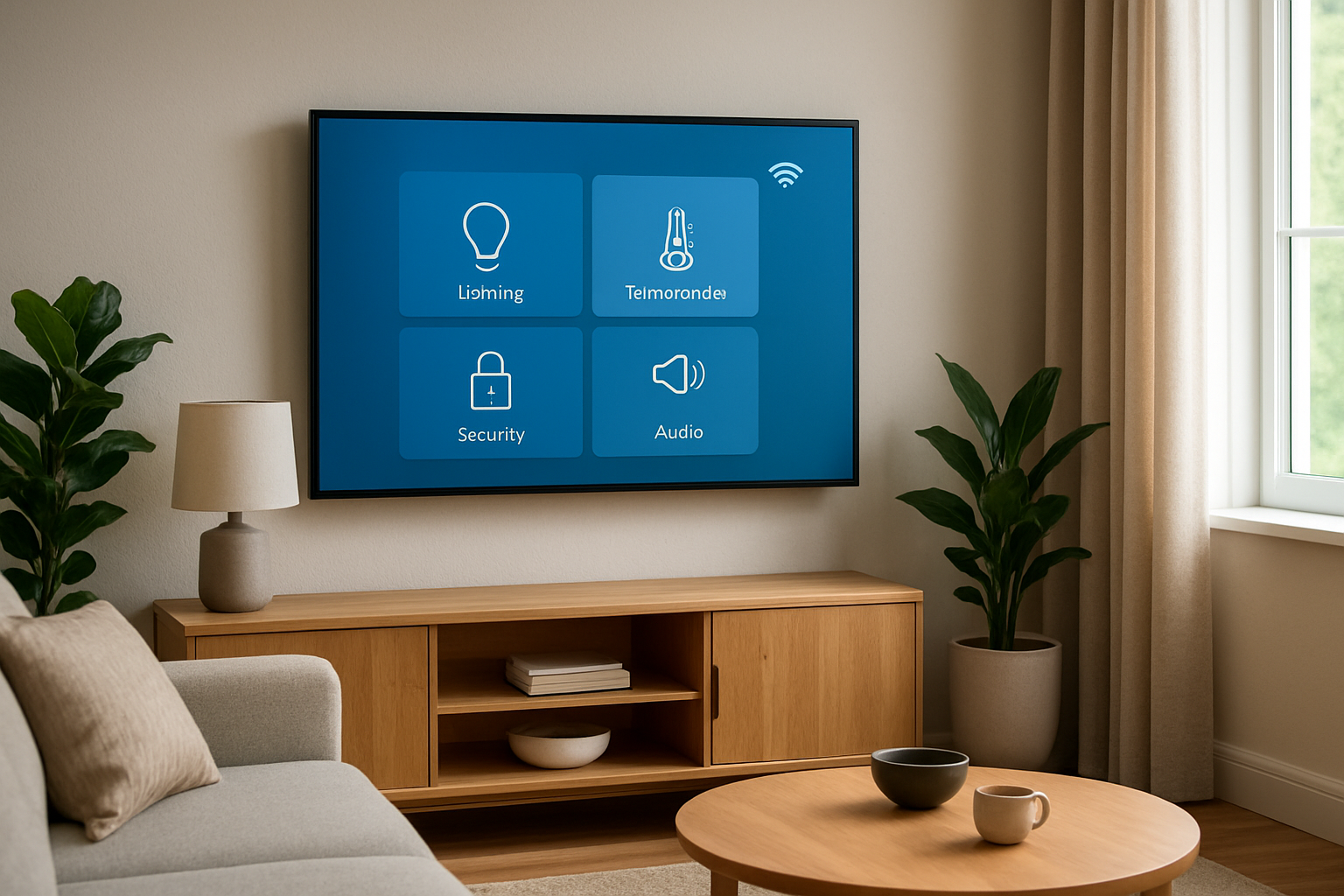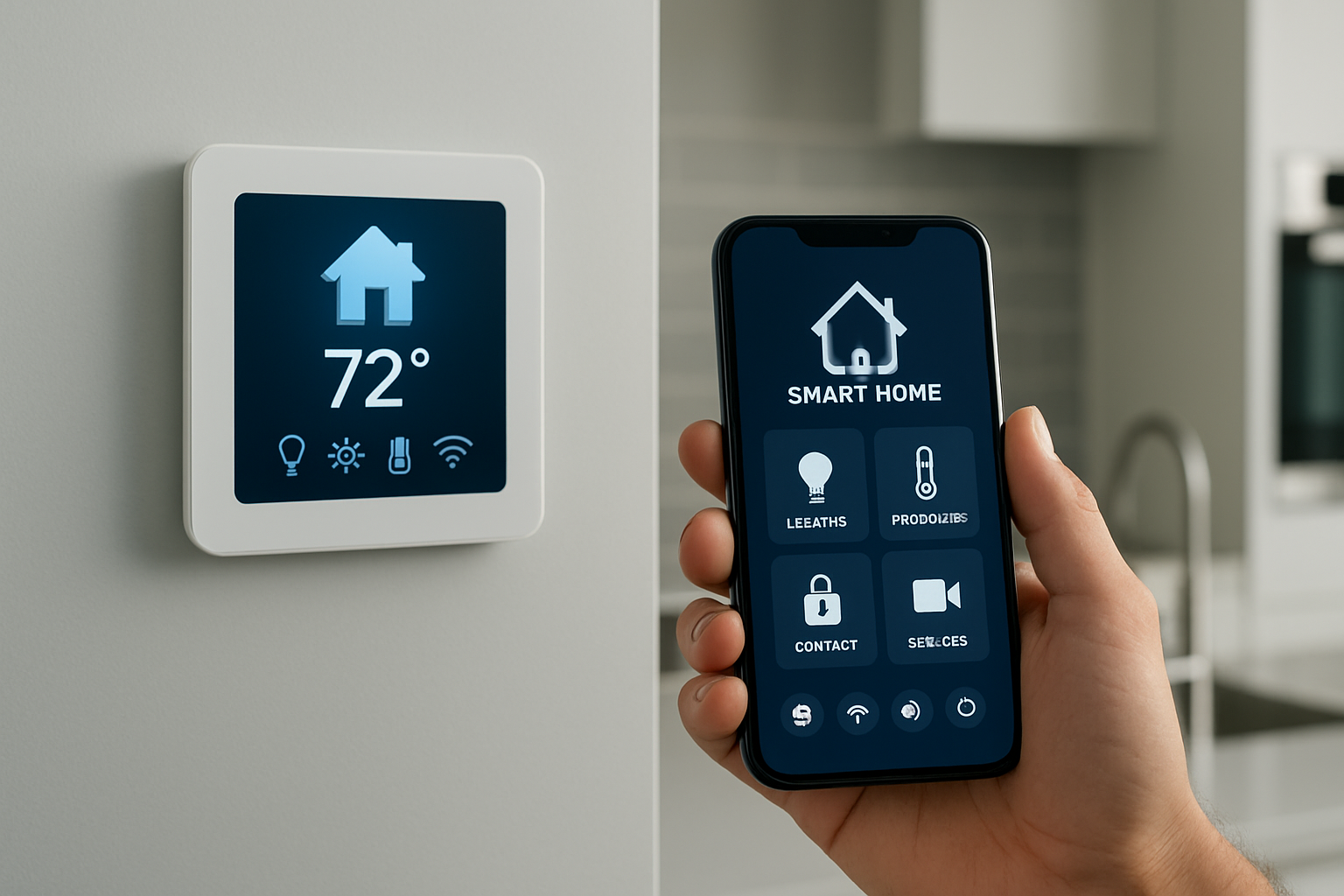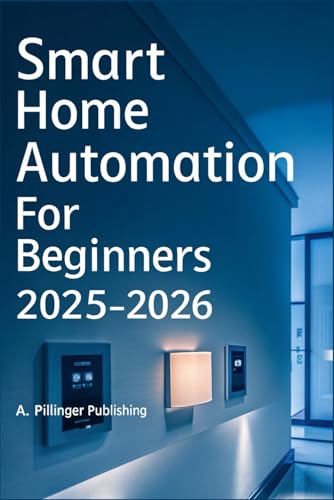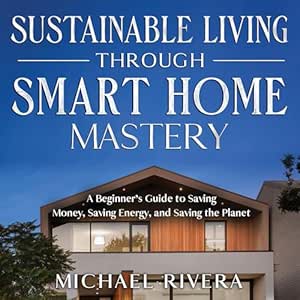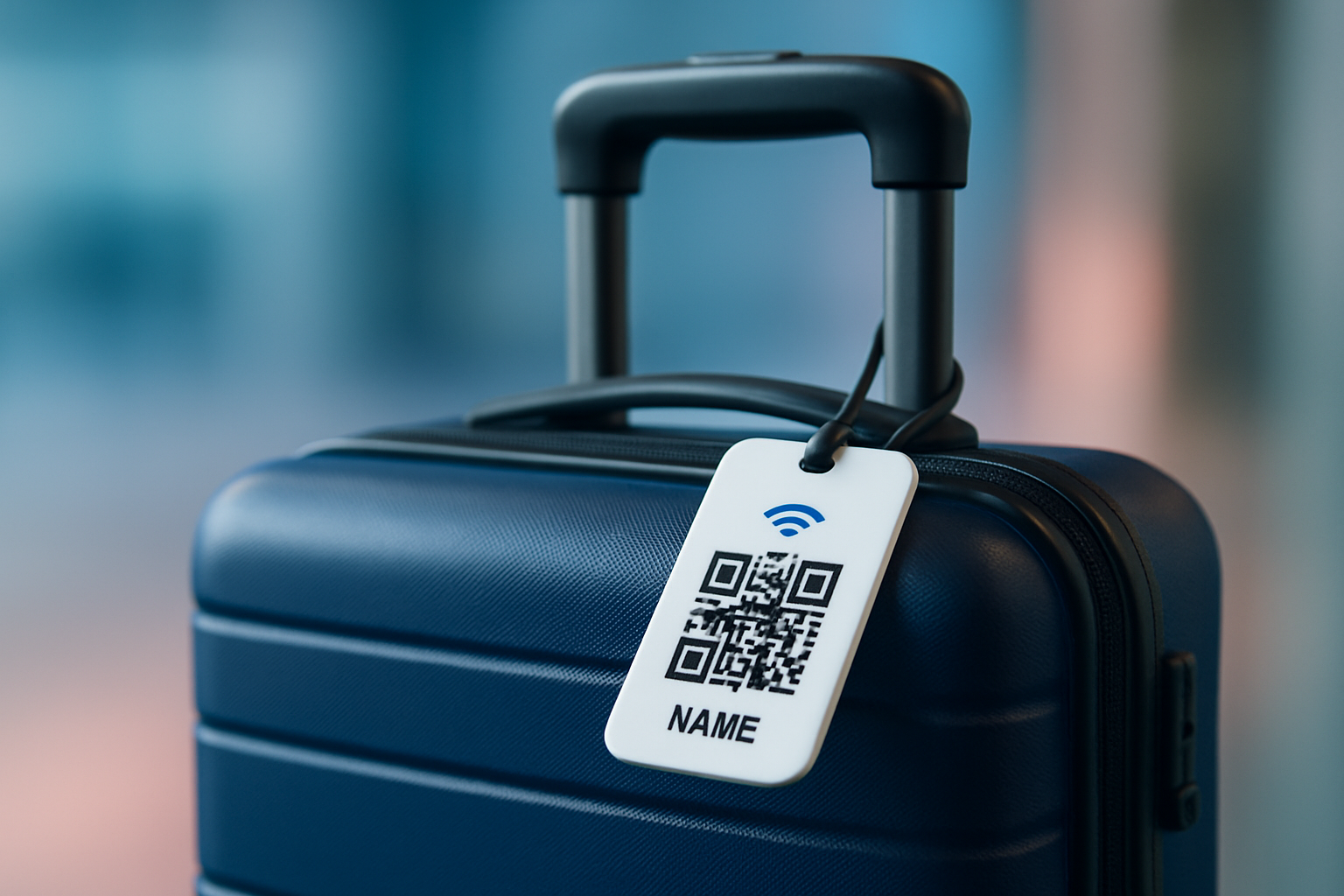Ready to turn drywall dust into delightful automations? Start with curated guides for smart home renovations that map your goals, budget, and wiring into a cohesive plan. Instead of buying devices piecemeal, you will design an integrated system that optimizes comfort, security, and energy use across rooms. According to industry surveys, smart thermostats and efficient lighting can trim utility bills by 10 to 25 percent, while water leak sensors cut the cost of major incidents dramatically. In the guide below, you will learn nine practical steps, room-by-room tactics, what protocols like Wi-Fi (Wireless Fidelity) and Thread (Thread networking protocol) actually do, and how High Tech Reviews equips you with expert analysis to pick the right tools for your lifestyle.
Why Curated Guides for Smart Home Renovations Matter
Renovation is the rare moment when you can add outlets, run low-voltage lines, and place sensors where they will work for decades. Without a plan, buyers often end up with overlapping apps, unreliable automations, or devices that cannot talk to one another. Curated guidance consolidates decisions: where to put smart switches vs. smart bulbs, which circuits need neutral wires, whether to spec PoE (Power over Ethernet) for cameras, and how to place Wi-Fi (Wireless Fidelity) access points for even coverage. It also ensures safety and compliance, directing you toward appropriately rated GFCI (Ground-Fault Circuit Interrupter) outlets, UL (Underwriters Laboratories) listed products, and correct IP (Ingress Protection) ratings for outdoor gear. The result is a home that feels intuitive on day one and stays flexible for upgrades.
Equally important, curated planning protects your budget and time. A little foresight, like running conduit behind televisions or placing a junction box near the front door for a video doorbell, preserves options without committing to specific brands. Simple choices, such as selecting LED (Light Emitting Diode) fixtures with high CRI (Color Rendering Index) or adding a UPS (Uninterruptible Power Supply) to a network cabinet, improve daily quality of life and resilience. And when you adopt standards like Matter (Matter smart home standard), Bluetooth LE (Bluetooth Low Energy), and Thread (Thread networking protocol), you gain cross-vendor interoperability and easier device onboarding. High Tech Reviews synthesizes these best practices into clear next steps so you can prioritize what delivers tangible comfort, safety, and savings.
The 9 Essential Steps for a Seamless Upgrade
-
Define Outcomes, Not Just Devices
Start by writing the experiences you want. Do you want a quieter bedroom, a safer entryway, or energy savings in the kitchen? Translate these into automations like “lights fade to warm when the sun sets” or “HVAC (Heating, Ventilation, and Air Conditioning) reduces setpoint when windows open.” Set a target budget range and allocate 10 to 15 percent for contingencies. This goals-first approach prevents impulse buys and guides every wiring and placement decision during construction.
-
Map Power, Networking, and Control
Create a simple floor plan showing outlets, light switches, network runs, and device locations. Plan dedicated circuits for always-on gear like routers, network-attached storage, and a UPS (Uninterruptible Power Supply). Place ceiling or hallway APs (Access Points) for strong Wi-Fi (Wireless Fidelity) in every room, and consider PoE (Power over Ethernet) for cameras and access points for reliability. Label everything and document cable types so future upgrades take minutes instead of hours.
-
Select Interoperable Standards
Choose a platform strategy that supports Matter (Matter smart home standard), Thread (Thread networking protocol), and popular automations through IFTTT (If This Then That). Favor devices with local control to reduce cloud dependence and improve responsiveness. Leverage Wi-Fi (Wireless Fidelity) for high-bandwidth gear, Thread for low-power sensors, and consider Z-Wave (Z-Wave protocol) where it already fits your plan. This blended approach keeps your home responsive today and adaptable tomorrow.
-
Harden Security and Privacy
Protect your network with a strong router firewall, a separate IoT (Internet of Things) VLAN (Virtual Local Area Network), and QoS (Quality of Service) rules to keep streaming smooth. Use multifactor authentication and unique passwords for each account. Prefer devices with on-device encryption and local video storage where possible, and back up recordings to a VPN (Virtual Private Network) or trusted cloud. Security is not a one-time task; schedule quarterly reviews of app permissions and firmware.
-
Prioritize Lighting and Shading
Great lighting is the foundation of a welcoming home. Decide where you need smart switches vs. smart bulbs, and use dimmers compatible with LED (Light Emitting Diode) loads. Add occupancy sensors in hallways and closets, and motorized shades on east or west windows to control heat gain. A sunrise scene can synchronize with your fitness tracker via NFC (Near Field Communication) routines, helping you wake naturally with warm light that transitions to cooler tones for focus.
-
Optimize Comfort and Energy
Install smart thermostats, room sensors, and occupancy-based heating and cooling rules to reduce waste without sacrificing comfort. Industry data suggests these measures can save 10 to 15 percent on energy usage measured in kWh (kilowatt-hour). Add leak detectors under sinks and near appliances, and fit smart shutoff valves to stop water damage automatically. Consider energy monitoring at the panel to see which circuits draw the most, and set alerts when usage spikes unexpectedly.
-
Secure Entry and Perimeter
Plan for a smart deadbolt, video doorbell, and a well-placed chime or indoor display. Exterior cameras should meet an appropriate IP (Ingress Protection) rating, and spotlight fixtures should be LED (Light Emitting Diode) for efficiency. Use door and window sensors to trigger welcome lights and notifications, and add a smart garage controller for deliveries. Keep devices hardwired where possible with PoE (Power over Ethernet) to eliminate battery maintenance and improve reliability.
-
Design Entertainment That Disappears
Hide cables by running conduit behind wall-mounted televisions and prewiring for in-ceiling speakers. Specify IR (Infrared) repeaters or consider control systems that support local APIs (Application Programming Interfaces) for seamless scenes. Group speakers for multiroom audio that follows you from kitchen to patio. When entertainment systems are quiet, your home should be too; proper cable management and low-noise fans keep dB (decibel) levels pleasant during movies and late-night browsing.
-
Test, Document, and Iterate
Before closing walls, test each cable run, switch, and scene. After installation, write a simple “owner’s manual” listing devices, apps, and reset procedures. Take photos of open walls and save them to a shared drive. Finally, schedule a 30-day and 90-day review to adjust automations, tweak sensor sensitivity, and add voice commands. The best systems evolve with you, not against you.
Room-by-Room Upgrade Playbook
Renovations become easier when you think in zones. Each room has different “jobs,” and your device plan should match them. In the kitchen, safety and task lighting are paramount. In bedrooms, comfort and restful routines matter. In bathrooms, moisture ratings and GFCI (Ground-Fault Circuit Interrupter) protection are nonnegotiable. The table below highlights practical options that fit most homes without locking you into a specific brand. As you review, visualize cable paths, outlet placement, and where NFC (Near Field Communication) tags or voice assistants might simplify daily tasks.
| Room | Core Goals | Smart Additions to Consider | Wiring and Power Notes | Expected Impact |
|---|---|---|---|---|
| Entry | Security, convenience | Video doorbell, smart lock, foyer motion lighting | Doorbell low-voltage wire, strike plate alignment, strong Wi-Fi (Wireless Fidelity) signal | Safer deliveries, hands-free entry, better visibility |
| Living Room | Comfort, ambience | Scene-based lighting, smart shades, multiroom audio | Add conduit behind TV, speaker wire runs, dimmer-compatible LED (Light Emitting Diode) fixtures | Cozy evenings, quick media setup |
| Kitchen | Task lighting, safety | Under-cabinet LED (Light Emitting Diode), leak sensors, occupancy switches | GFCI (Ground-Fault Circuit Interrupter) outlets, water sensor placement near sink and dishwasher | Fewer accidents, better cooking zones |
| Bedroom | Rest, routine | Circadian lighting, silent smart shades, sleep-friendly scenes | Neutral wire at switches, bedside USB (Universal Serial Bus) outlets | Easier sleep, gentle wake automation |
| Bathroom | Safety, ventilation | Humidity-triggered fans, mirror defoggers, water leak sensors | GFCI (Ground-Fault Circuit Interrupter) circuits, IP (Ingress Protection) rated fixtures | Reduced moisture damage, clearer mirrors |
| Garage | Access, monitoring | Smart opener, motion lights, temperature sensor | Strong Wi-Fi (Wireless Fidelity) or wired connection, ceiling outlet | Safer arrivals, better storage climate |
| Outdoor | Perimeter, ambience | Pathway lighting, cameras, irrigation controller | Weatherproof boxes, PoE (Power over Ethernet) where possible | Enhanced curb appeal, water savings |
Budget, Timeline, and ROI (Return on Investment)
Clear budgets keep projects calm and predictable. A good rule is to anchor costs around outcomes: comfort, safety, and savings measured in kWh (kilowatt-hour) and time. Starter packages often begin with lighting and a smart thermostat, while flagship builds add panel-level energy monitoring, wired networking, and motorized shades. Timelines vary by scope and inspection schedules, but most homeowners can complete the core automations during the same window as painting, flooring, and cabinet installation. Use the matrix below to match ambition with resources and set realistic expectations for payback.
| Tier | Typical Scope | Estimated Cost | Timeline | Value Highlights |
|---|---|---|---|---|
| Starter | Smart thermostat, 6 to 10 lighting zones, entry sensors | $1,000 to $3,000 | 3 to 7 days | Lower energy use, safer entry, easy wins |
| Enhanced | Shades, cameras with PoE (Power over Ethernet), multiroom audio, leak protection | $3,000 to $10,000 | 1 to 3 weeks | Better comfort, proactive safety, fewer monthly surprises |
| Flagship | Panel energy monitoring, whole-home networking, built-in speakers, advanced scenes | $10,000 to $40,000+ | 3 to 8 weeks | Whole-home cohesion, premium finishes, future-ready infrastructure |
Where do savings come from? LED (Light Emitting Diode) lighting cuts lighting energy by up to 75 percent vs. traditional bulbs, smart thermostats shave heating and cooling loads by 10 to 15 percent, and leak detection can prevent thousands in water damage. Irrigation controllers using local weather data reduce outdoor water usage meaningfully, especially in dry climates. While every home is unique, many households see measurable reductions in utility bills within the first 90 days, plus soft savings in time and peace of mind. Track these outcomes in a simple spreadsheet and review quarterly to keep your system aligned with your lifestyle and budget.
Smart Standards and Compatibility Explained
Protocols are the language your devices speak. Understanding a few essentials will make every choice simpler. Wi-Fi (Wireless Fidelity) offers bandwidth for video and speakers; Thread (Thread networking protocol) creates a low-power mesh that keeps sensors responsive; Z-Wave (Z-Wave protocol) remains dependable in certain retrofit contexts; Bluetooth LE (Bluetooth Low Energy) excels at low-energy pairing; Matter (Matter smart home standard) aims to unify setup and control. The table below summarizes how these pieces fit together so you can select the right option by device type, not by brand name.
| Standard or Protocol | Primary Purpose | Strengths | Typical Uses | Notes |
|---|---|---|---|---|
| Wi-Fi (Wireless Fidelity) | High-bandwidth networking | Fast, ubiquitous | Cameras, speakers, hubs | Plan AP (Access Point) placement for even coverage |
| Thread (Thread networking protocol) | Low-power mesh | Reliable, battery friendly | Sensors, locks, switches | Often works with Matter (Matter smart home standard) |
| Z-Wave (Z-Wave protocol) | Low-power mesh | Stable, proven | Switches, sensors | Useful in mature retrofit ecosystems |
| Bluetooth LE (Bluetooth Low Energy) | Short-range pairing | Low energy, quick setup | Sensors, wearables | Great for NFC (Near Field Communication) trigger handoffs |
| Matter (Matter smart home standard) | Unified device control | Cross-brand interoperability | Setup and control layer | Reduces app fragmentation |
| PoE (Power over Ethernet) | Power and data in one cable | Reliable, secure | Cameras, access points | Eliminates wall-wart power supplies |
Compatibility is more than logos. Check that dimmers support LED (Light Emitting Diode) wattages, door locks fit your door prep, and outdoor devices have the correct IP (Ingress Protection) rating. Confirm that your router can manage VLAN (Virtual Local Area Network) segmentation and QoS (Quality of Service) if you stream 4K video. If you are privacy conscious, prefer local control with optional cloud features and encrypt remote access via VPN (Virtual Private Network). High Tech Reviews explains these details in plain language, separating marketing from engineering so you can buy once and enjoy for years.
How High Tech Reviews Helps You Build With Confidence
High Tech Reviews exists to remove the guesswork from smart living. Adults and tech-savvy consumers often face a maze of specs, buzzwords, and unverified reviews. Our in-depth gadget reviews and comparisons, expert commentary on trending high-tech tools, and comprehensive guides for smart home and fitness devices translate complex features into practical benefits. We also maintain a curated selection of travel and lifestyle accessories so your connected life extends from your living room to your next trip. The website provides expert reviews, product highlights, and curated recommendations that help users make informed purchasing decisions and discover the best technology solutions.
Consider a typical remodel scenario. A family renovating a 1980s home set three goals: quieter rooms, safer entry, and lower utility bills. By prewiring for PoE (Power over Ethernet) cameras, placing APs (Access Points) in hallways, and choosing LED (Light Emitting Diode) fixtures with high CRI (Color Rendering Index), they improved comfort and cut energy use as measured in kWh (kilowatt-hour) by an estimated 14 percent in the first quarter. A smart thermostat and occupancy rules eased late-night heating, while leak sensors caught a small dishwasher drip before it became a $5,000 repair. The plan started with a simple checklist like the one below and grew as needs evolved.
| Planning Checklist | What to Decide | Why It Matters |
|---|---|---|
| Lighting Strategy | Switch vs. bulb, dimmer types, color temperature | Ensures comfort, avoids flicker with LED (Light Emitting Diode) |
| Network Topology | AP (Access Point) locations, PoE (Power over Ethernet) runs, UPS (Uninterruptible Power Supply) | Keeps Wi-Fi (Wireless Fidelity) stable, enables cameras and sensors |
| Security Layers | Door locks, doorbell, cameras, local storage | Deters threats, preserves privacy, faster access |
| Energy Plan | Thermostat, room sensors, panel monitoring | Lowers kWh (kilowatt-hour) usage and monthly costs |
| Documentation | Device list, wiring photos, reset procedures | Eases support, accelerates future upgrades |
When you are ready to choose devices, High Tech Reviews provides friendly, informative reviews focused on how each feature helps you day to day. Want a bedroom routine that syncs with your wearable and eases you awake with light and warm air? Curious how a smart irrigation controller uses local weather data to reduce waste while keeping your garden vibrant? Our step-by-step explainers show you how to configure scenes, set up voice commands, and secure your system with VLAN (Virtual Local Area Network) segmentation and VPN (Virtual Private Network) access. Above all, we prioritize clarity and trust so you can renovate confidently, guided by curated guides for smart home renovations that keep your project on track.
Frequently Asked Practical Questions
Where should the smart hub live? A ventilated closet or utility space with a UPS (Uninterruptible Power Supply) keeps gear safe and makes maintenance simple. Do I need a neutral wire at switches? Most smart switches do require one, so ask your electrician to run neutrals during rough-in. How many APs (Access Points) do I need? As a rule of thumb, one per 1,000 to 1,500 square feet depending on walls and layout, using 5 GHz (gigahertz) channels for performance. How bright should living room fixtures be? Aim for layered lighting with dimmable LED (Light Emitting Diode) downlights and lamps around 2700 to 3000 Kelvin, reserving higher CRI (Color Rendering Index) task lights for reading and hobbies. Still unsure? High Tech Reviews translates these technical decisions into everyday language and action steps you can follow.
Your home should feel calm, secure, and effortless once the dust settles. In the next 12 months, more devices will adopt Matter (Matter smart home standard) and Thread (Thread networking protocol), making setup faster and control more unified. What small decision can you make today that future-you will thank you for a year from now?
Imagine never hunting for a switch, never wondering if the door is locked, and never guessing which gadget fits your system. Ready to turn plans into progress with curated guides for smart home renovations?
Additional Resources
Explore these authoritative resources to dive deeper into curated guides for smart home renovations.
Elevate Smart Home Renovations With High Tech Reviews
Adults and tech-savvy consumers accelerate upgrades with Comprehensive guides for smart home and fitness devices, expert reviews, and curated recommendations to make informed decisions and discover top technology solutions.

